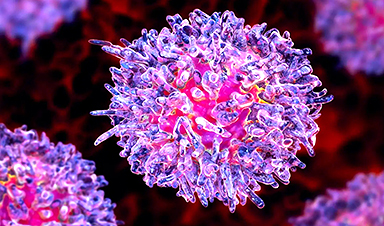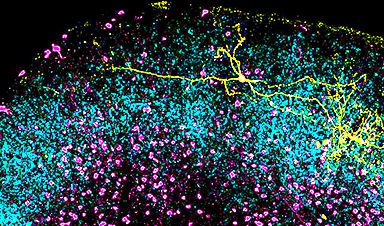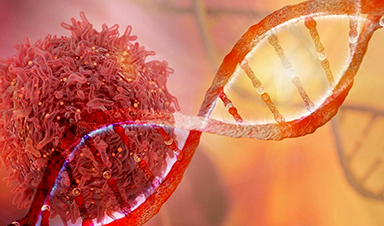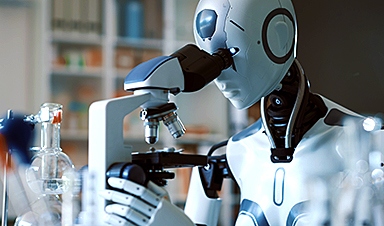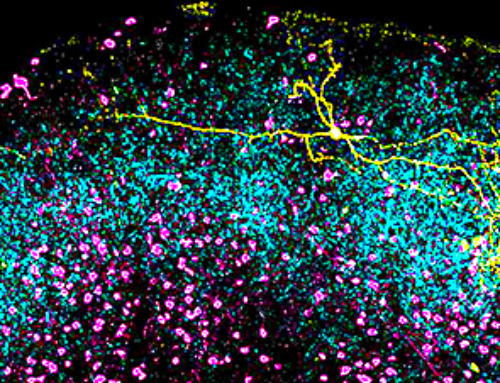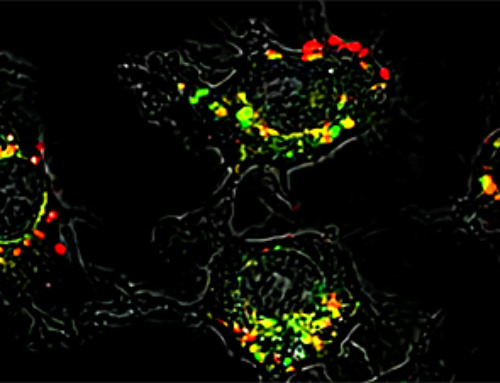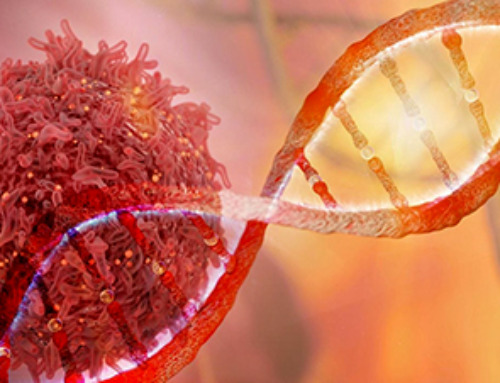Future clinical trials will be conducted to investigate whether the combination of chloroquine and venetoclax can prevent disease recurrence.
Although new drugs have been developed to induce cancer cell death in individuals with acute myeloid leukemia, the leukemic cells often develop resistance and evade the drugs’ effects within a year.
Recently, research conducted using both human tissue samples and mouse models has uncovered that the resistance of leukemia cells to the widely used drug venetoclax is due to an abrupt surge in the breakdown and turnover of mitochondria. These structures within the cell play a crucial role in generating energy and also signal the cell to undergo programmed cell death under certain adverse conditions.
Led by scientists at NYU Langone Health and its Perlmutter Cancer Center, the study showed that mitophagy helps leukemia cells to evade the killing effects of venetoclax, a drug in a class of medications known as BH3 mimetics.
In a study recently published in the journal Cancer Discovery, researchers found that the levels of several genes associated with mitophagy were increased in 20 leukemia patient samples compared with normal controls. The level of these genes was even higher in samples from leukemia patients with drug resistance than in those leukemic patients who were not. Particularly notable was the increased expression of the gene for Mitofusin-2 (MFN2), which codes for a key protein in the outer mitochondrial membrane.
Further experiments using mice into which bone marrow from acute myeloid leukemia patients was transplanted showed that the drug chloroquine, a known mitophagy inhibitor, restored the ability of venetoclax to kill the cancer cells.
“Overcoming resistance to BH3 mimetic drugs like venetoclax is of unique clinical significance because these medications are often used for treating people with acute myeloid leukemia,” said study co-lead investigator Christina Glytsou, Ph.D., a former postdoctoral researcher at NYU Grossman School of Medicine and now an assistant professor at Rutgers University.
“Acute myeloid leukemia is notoriously difficult to treat, with fewer than a third of those affected living longer than five years after their diagnosis, so it is important to maximize the impact of existing therapies,” said study co-lead investigator Xufeng Chen, Ph.D., an instructor in the Department of Pathology at NYU Grossman.
“Our preclinical findings suggest that combining BH3 mimetics like venetoclax with either MFN2 or general mitophagy inhibitors could possibly serve as a future therapy for acute myeloid leukemia, as current drug treatments are stalled due to drug resistance,” said study senior investigator Iannis Aifantis, Ph.D.
Aifantis, the Hermann M. Biggs Professor and chair of the Department of Pathology at NYU Grossman and Perlmutter, says the research team plans to design a clinical trial to test whether chloroquine, when used in combination with venetoclax, prevents drug resistance in people with acute myeloid leukemia.
Speaking about other study results, the researchers say they not only found that MFN2 was overly active in people with drug-resistant disease, but also that cancer cells exposed to similar cell-death-inducing compounds demonstrated a doubling in mitophagy rates.
Additional testing in cancer cells engineered to lack MFN2 showed increased sensitivity to drugs similar to venetoclax compared with cells that had functional MFN2. The new study and previous research by the team showing misshapen mitochondria in drug-resistant leukemic cells confirmed that increased mitophagy was the source of the problem.
Acute myeloid leukemia, the most common form of adult leukemia, originates in the bone marrow cells and involves the rapid buildup of abnormal blood cells. The blood cancer results in the deaths of more than 11,500 Americans annually. Current treatments include chemotherapy and a limited number of targeted drug therapies. Bone marrow transplantation has also been used when other options fail.
Reference: “Mitophagy promotes resistance to BH3 mimetics in acute myeloid leukemia” by Christina Glytsou, Xufeng Chen, Emmanouil Zacharioudakis, Wafa Al-Santli, Hua Zhou, Bettina Nadorp, Soobeom Lee, Audrey Lasry, Zhengxi Sun, Dimitrios Papaioannou, Michael Cammer, Kun Wang, Tomasz Zal, Malgorzata Anna. Zal, Bing Z. Carter, Jo Ishizawa, Raoul Tibes, Aristotelis Tsirigos, Michael Andreeff, Evripidis Gavathiotis and Iannis Aifantis, 24 April 2023, Cancer Discovery.
DOI: 10.1158/2159-8290.CD-22-0601
The study was funded by the National Science Foundation. Additional funding support was provided by the Leukemia & Lymphoma Society and by AstraZeneca, which provided several of the BH3 mimetic drugs used in these experiments.
Aifantis has received additional research funding from AstraZeneca. This arrangement is being managed in accordance with the policies and practices of NYU Langone Health.
News
Lipid nanoparticles discovered that can deliver mRNA directly into heart muscle cells
Cardiovascular disease continues to be the leading cause of death worldwide. But advances in heart-failure therapeutics have stalled, largely due to the difficulty of delivering treatments at the cellular level. Now, a UC Berkeley-led [...]
The basic mechanisms of visual attention emerged over 500 million years ago, study suggests
The brain does not need its sophisticated cortex to interpret the visual world. A new study published in PLOS Biology demonstrates that a much older structure, the superior colliculus, contains the necessary circuitry to perform the [...]
AI Is Overheating. This New Technology Could Be the Fix
Engineers have developed a passive evaporative cooling membrane that dramatically improves heat removal for electronics and data centers Engineers at the University of California San Diego have created an innovative cooling system designed to greatly enhance [...]
New nanomedicine wipes out leukemia in animal study
In a promising advance for cancer treatment, Northwestern University scientists have re-engineered the molecular structure of a common chemotherapy drug, making it dramatically more soluble and effective and less toxic. In the new study, [...]
Mystery Solved: Scientists Find Cause for Unexplained, Deadly Diseases
A study reveals that a protein called RPA is essential for maintaining chromosome stability by stimulating telomerase. New findings from the University of Wisconsin-Madison suggest that problems with a key protein that helps preserve chromosome stability [...]
Nanotech Blocks Infection and Speed Up Chronic Wound Recovery
A new nanotech-based formulation using quercetin and omega-3 fatty acids shows promise in halting bacterial biofilms and boosting skin cell repair. Scientists have developed a nanotechnology-based treatment to fight bacterial biofilms in wound infections. The [...]
Researchers propose five key questions for effective adoption of AI in clinical practice
While Artificial Intelligence (AI) can be a powerful tool that physicians can use to help diagnose their patients and has great potential to improve accuracy, efficiency and patient safety, it has its drawbacks. It [...]
Advancements and clinical translation of intelligent nanodrugs for breast cancer treatment
A comprehensive review in "Biofunct. Mater." meticulously details the most recent advancements and clinical translation of intelligent nanodrugs for breast cancer treatment. This paper presents an exhaustive overview of subtype-specific nanostrategies, the clinical benefits [...]
It’s Not “All in Your Head”: Scientists Develop Revolutionary Blood Test for Chronic Fatigue Syndrome
A 96% accurate blood test for ME/CFS could transform diagnosis and pave the way for future long COVID detection. Researchers from the University of East Anglia and Oxford Biodynamics have created a highly accurate [...]
How Far Can the Body Go? Scientists Find the Ultimate Limit of Human Endurance
Even the most elite endurance athletes can’t outrun biology. A new study finds that humans hit a metabolic ceiling at about 2.5 times their resting energy burn. When ultra-runners take on races that last [...]
World’s Rivers “Overdosing” on Human Antibiotics, Study Finds
Researchers estimate that approximately 8,500 tons of antibiotics enter river systems each year after passing through the human body and wastewater treatment processes. Rivers spanning millions of kilometers across the globe are contaminated with [...]
Yale Scientists Solve a Century-Old Brain Wave Mystery
Yale scientists traced gamma brain waves to thalamus-cortex interactions. The discovery could reveal how brain rhythms shape perception and disease. For more than a century, scientists have observed rhythmic waves of synchronized neuronal activity [...]
Can introducing peanuts early prevent allergies? Real-world data confirms it helps
New evidence from a large U.S. primary care network shows that early peanut introduction, endorsed in 2015 and 2017 guidelines, was followed by a marked decline in clinician-diagnosed peanut and overall food allergies among [...]
Nanoparticle blueprints reveal path to smarter medicines
Lipid nanoparticles (LNPs) are the delivery vehicles of modern medicine, carrying cancer drugs, gene therapies and vaccines into cells. Until recently, many scientists assumed that all LNPs followed more or less the same blueprint, [...]
How nanomedicine and AI are teaming up to tackle neurodegenerative diseases
When I first realized the scale of the challenge posed by neurodegenerative diseases, such as Alzheimer's, Parkinson's disease and amyotrophic lateral sclerosis (ALS), I felt simultaneously humbled and motivated. These disorders are not caused [...]
Self-Organizing Light Could Transform Computing and Communications
USC engineers have demonstrated a new kind of optical device that lets light organize its own route using the principles of thermodynamics. Instead of relying on switches or digital control, the light finds its own [...]
